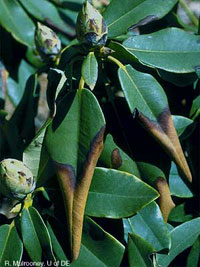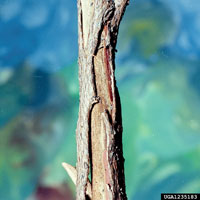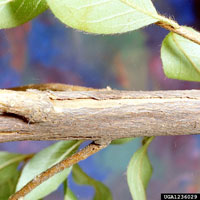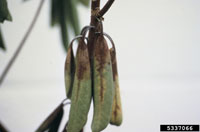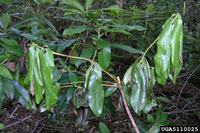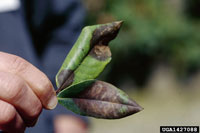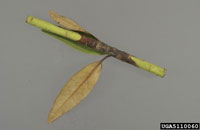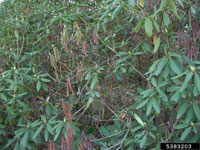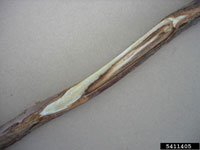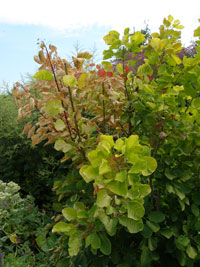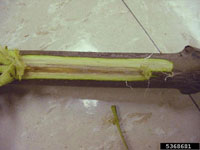Extension > Garden > Diagnose a problem > What's wrong with my plant? > Deciduous > Azalea/Rhododendron > Dead branches or branch or shoot dieback
Azalea/Rhododendron > Stems/branches > Dead branches or branch or shoot dieback
1 of 5
Winter injury
- Leaves turn brown from the tip back and curl under
- Peeling, sloughing, splitting or cracking of bark near the soil line
- Fail to bloom because flower buds are damaged
- Branches or entire plants may die back
- More information on winter injury
2 of 5
Phytophthora Root Rot
Phytophthora spp.
- Leaves droop, turn dull-green to yellow and roll downward
- Stunting, permanent wilting and leaf drop occurs as disease progresses
- Roots are reddish-brown in color and many are rotted off
- If the bark is scraped off at ground level. Sapwood is reddish brown
- More information on Phytophthora root rot
3 of 5
Phytophthora leaf spot and shoot blight
Phytophthora spp.
- Irregular gray to brown spots on leaves
- Dark brown to black blotches on green stems
- Leaf drop may occur and shoot tips die back
- More information on Phytophthora root rot
4 of 5
Botryosphaeria canker
Botryoshaeria dothidea
- Leaves on one or more branches wilt, die and turn brown
- Cankers are sunken, dark colored areas on branches
- Fungal fruiting bodies give canker area a rough or pimpled appearance
- Infected young shoots turn dark brown and curl over in a shepherd's crook
- More information on Botryosphaeria canker
5 of 5
Verticillium wilt
Verticillium spp.
- Problem only in azaleas; rhododendrons are resistant
- Leaves on one to several branches turn red to yellow, wilt, die and fall off
- Dark olive to gray streaks are often visible in the sapwood if the bark is peeled back
- The entire canopy may show symptoms in a single season or take several years
- Symptoms are often most obvious in late summer and autumn but can occur throughout the growing season
- More information on verticillium wilt



